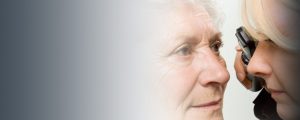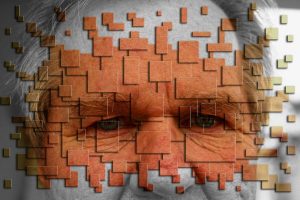What is Bell’s palsy?
Bell’s Palsy is a condition that causes the muscles on one side of your face to droop or become stiff, either as a result of weakening or paralysis of the facial nerve (seventh cranial nerve). The facial nerve controls the muscles of facial expression, eyelid and forehead movement, and carries sensations from the taste buds on the anterior two-thirds of the tongue.
- Bell’s palsy affects up to 1 in 70 people in a lifetime.
- Women and men are equally affected.
- Symptoms are most common between the ages of 10 and 40 years.
What causes Bell’s palsy?
While the exact cause of Bell’s palsy is unknown, most researchers believe that the condition is most commonly caused by a viral infection, diabetes, or herpes simplex 1 virus.
When the facial nerve is damaged, it becomes swollen, making it more difficult to pass through the narrow, bony area within the skull— and consequently affecting its normal functioning.
What are the symptoms of Bell’s palsy?
The symptoms of Bell’s palsy occur suddenly, without warning— though some people feel pain behind their ear or increased sensitivity to sound a day or two before symptoms present.
The following symptoms are commonly associated with Bell’s palsy— keep in mind, only one side of your face will be affected:
- Inability to close your eyelid
- Dry eye
- Watery eye
- Drooling
- Difficulty chewing
- Reduced sense of taste
- Twitching of facial muscles
- Numbness on one side of face
- Pain in or behind your ear
- Increased sensitivity to sound
- Changes in taste on front half of tongue
Facial drooping and weakness become progressively worse within a day or two. Symptoms will generally subside within a couple of weeks, though complete recovery is typically noticed within three to six months.
In 29 percent of people, symptoms may become permanent.
How does Bell’s palsy affect the eyes?
Bell’s palsy affects the facial nerve, which controls the muscles responsible for closing the eyelids. Therefore, if you have Bell’s palsy you will not be able to blink, or close the affected eye— not even partially.
Since the muscle that opens the eyelid is not affected by the facial nerve, your eye will remain in an open position— which commonly causes a condition called exposure keratitis, an extreme form of dry eye syndrome.
People with Bell’s palsy may also develop an outward turn of their lower eyelid, a condition called ectropion.
How is bell’s palsy diagnosed?
Bell’s palsy is typically a diagnosis of exclusion, when all other related conditions are ruled out.
During your eye exam, your doctor will try to close your affected eyelid. If your eye turns upward and outward when he tries to close it, you will be diagnosed with the “Bell phenomenon”.
Your doctor will also test your hearing and sense of balance, and may include a skull x-ray, computed tomography (CT) scan, or magnetic resonance imaging (MRI) to confirm your condition. With electrical testing, your doctor may be able to determine how long the condition will affect your nerves and if a full recovery will occur.
Contact an eye doctor near you that has experience in diagnosing and managing eye conditions brought on by Bell’s Palsy.
SEE RELATED: Ptosis: Why Is My Eyelid Drooping?
Bell’s palsy treatment
Unfortunately, there are no effective treatments to reduce your symptoms from Bell’s palsy. However, if your doctor thinks that the herpes virus has caused your symptoms, an antiviral medication may be prescribed to eliminate the virus— though, there is no evidence to prove that these medications will eliminate the Bell’s palsy symptoms.
Your doctor may also prescribe a corticosteroid, such as prednisone, to reduce the swelling of your facial nerve and decrease the duration of your Bell’s palsy symptoms.
Facial massages with electrical stimulation, biofeedback, and specific exercises are generally prescribed as part of a Bell’s palsy treatment protocol. These techniques help to stimulate your facial nerve to improve normal functioning.
Protect your eyes
To prevent severe dry eye caused by the effects of Bell’s palsy, your doctor will recommend using an artificial tears eye drop, gel, or ointment. There are many different types, so it is best to ask your eye doctor for a recommendation based on your specific needs.
Applying lubricating eye drops and ointment, especially before bedtime will significantly help to reduce your risk of exposure keratitis. In some cases, the affected eyelid will be taped closed before bedtime to prevent the eye from drying out during the night.
Caution: Do not tape your eye closed before speaking with your eye doctor first. Specific instructions will be given to effectively tape your eye without causing further risk of complication.
Wearing a moisture chamber or eye patch is generally recommended to keep moisture in, and prevent many uncomfortable symptoms from dry eye.
A moisture chamber sits on your eye like a goggle, and locks in the moisture within your eye. It provides better protection than an eye patch, and its clear window enables clear vision.
Eye patches can be used to prevent eye exposure, and are typically recommended for nighttime wear. Most eye doctors will recommend applying a lubricating ointment to your eye and then place the patch on top. A cloth patch can also help you to fall asleep better at night, as it blocks the light from entering your open eye.
When moisture chambers and patches are not enough, eyelid weights can be prescribed to help you close your eye. These weights can either be self-adhered to your eyelid every day, or surgically sewn onto your eyelid by your eye doctor. While these eyelid weights can be effective in protecting your eye, they can affect your vision clarity.
LEARN MORE: Guide to Eye Conditions
If you are experiencing symptoms of Bell’s palsy, schedule an appointment with an eye doctor near you as soon as possible for an accurate diagnosis.
Though Bell’s palsy is not a life-threatening condition, its symptoms can mimic a stroke, so a quick and accurate diagnosis is crucial.
An early diagnosis will help you to receive the most appropriate treatment and medical care.









